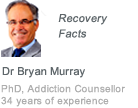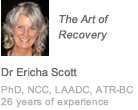Biphetamine Addiction
Biphetamine addiction is one of the most common addictions in the United States and various countries in Europe. As the name suggests, biphetamine is an amphetamine. Adderall, a brand name for biphetamine, is a unique medication in that it is both a norepinephrine re-uptake inhibitor as well as a dopamine re-uptake inhibitor. There are two different preparations of Adderall available, both of which treat Attention Deficit Hyperactivity Disorder (ADHD). The only difference between them is that one is also approved for the treatment of narcolepsy. Adderall IR (instant release), is prescribed for the treatment of both ADHD and Narcolepsy, while Adderall XR (extended release) is only indicated for use in the treatment of ADHD. Both preparations are reported to increase libido, alertness, improve mood, increase energy, and increase concentration.
Biphetamine seems like an innocuous medication, but it most certainly is not – it is an extremely potent stimulant drug with a potential for dependence or addiction and both short and long-term side effects. Other, similar stimulant drugs that are commonly prescribed include methamphetamine (Ritalin, Concerta) and cocaine.
How does biphetamine work and where does it come from?
Biphetamine is a combination of two amphetamine medications, hence the “Bi”. The two medications are racemicDL-amphetamine salts, and dextroamphetamine. Biphetamine acts directly on the reward system of the brain, so it presents an extremely high risk of misuse, abuse, and/or addiction, as do methamphetamine and cocaine. Indeed, biphetamine addiction is so common that the drug has been categorized as a Schedule II drug under the Controlled Substance Act (CSA) in the United States.
Adderall IR and Adderall XR are available on prescription in various doses. Adderall XR – the extended release formulation, uses a dual bead system for the release of the medication; the first “wave” of beads dissolves immediately, while the second wave releases roughly 4 hours later. All other medications that a patient is taking need to be monitored carefully if taken in association with biphetamine, there are many contra-indications that can be harmful and of course the patient also needs monitoring for signs of any potential biphetamine addiction developing. However, despite all of the addictive potential of biphetamine, it has been shown to significantly reduce symptoms associated with ADHD and in many patients it presents minimal side effects.
Government warnings
In 2005 Canada temporarily ceased production of Biphetamine after 12 deaths were allegedly associated with the taking of the drug in the United States. Although more than 37 million prescriptions for Adderall were filled during the four years prior, the FDA could find no increased risk of sudden death among biphetamine users.
In August 2006 Canada followed the committee report of three independent physicians and lifted the ban on Adderall in its extended release preparation. But a Black Box Warning regarding amphetamine abuse potential is in place.
In September 2008 Britain’s National Institute for Health and Clinical Excellence, (NICE), advised family doctors to stop prescribing biphetamines to children under the age of five because of the amount of development currently going on in their frontal lobes.
Biphetamine addiction is extremely common amongst high school, and university students who use the drug to help them study for exams and get assignments completed by allowing them to stay up all night. Adderall addiction is akin to cocaine addiction in that tolerance builds very quickly, and before an addict realizes it, they are doing what is known as “Doctor Shopping” to make sure that they do not run out of the drug. They will do this for 2 reasons:
- because they dread having to be without the effect of the drug for any length of time
- so that they never have to go through withdrawal
Biphetamine overdose by mistake happens – perhaps when a student needs just a little longer to keep going. Because biphetamine comes in pill form, it is very easy to take a few extra, not realizing the extreme effects that can, and often do, result. If too high a dose is taken, without a full tolerance being built up first, immediate cardiac arrest or stroke can result.
The symptoms of biphetamine addiction
Studies show that biphetamine can be used successfully for ADHD and narcolepsy when the dose is right and the patient is carefully monitored, but it is also known to be a frequently abused stimulant. Like any other amphetamine, it amplifies alertness, focus, and energy and causes the individual’s blood pressure, heart rate, and breathing to elevate. Biphetamine is abused orally (swallowed), intravenously (injected), smoked, or snorted through the nostril.
Many individuals believe Adderall to be a “safe prescription drug” and therefore less harmful to snort or inject than street drugs. But Adderall is not sterile and injecting or snorting this potent stimulant directly into the blood stream could result in infection or a fatal overdose. Biphetamine addiction is incredibly dangerous and could potentially lead to cardiovascular failure. Other consequences include:
- Irregular heartbeat
- Life-threateningly high body temperature
- Dehydration
- Feelings of paranoia and hostility
- Dry mouth
- Sleep disturbance
- Stomach aches
- Loss of appetite
- Weight loss
- Difficulty falling asleep
- Depression and anxiety
An overdose demands instant medical attention and the symptoms are:
- Seizures
- Confusion
- Uncontrollable twitching/shakiness
- High blood pressure
- Rapid breathing
- Delusions and hallucinations
- Heavy perspiration
- Swelling and numbing of the hands/feet/ankles/fingertips
- Nausea and vomiting
- Acute dehydration
- Muscle soreness
- Lower abdominal cramps
People who want to lose weight often abuse biphetamine because of its appetite suppressing and energy enhancing qualities. They enjoy the effects of biphetamine without being aware of the risks they are running.
Treatment for biphetamine addiction
Biphetamine manipulates dopamine levels in the brain in a way which is very similar to cocaine, so it is not surprising that the addiction and withdrawal symptoms of the medication closely mimic those of cocaine. When addicts do not take the medication, the dopamine levels flowing in the brain drop dramatically, and users feel intense cramping, mood swings, headaches, body aches, and tremors.
As well as intense cravings for biphetamine, an individual who is trying to stop using and wants to get clean is going to have an extremely tough task. Straight cold turkey without medical supervision is not an effective, or even safe, option for many biphetamine addicts. It is extremely difficult to quit, even with professional help, never mind trying to go it alone. Once the initial physical withdrawal and detox is over biphetamine addicts will need support, appropriate therapies, counseling and other continuing professional help. There are many approaches and programmes for helping people with biphetamine addiction; it is about finding the right one for the individual. So if you or someone you care about has fallen under the thrall of this readily available prescription drug go and get help, today.
Call your physician, look around online for rehab centers that provide the right programmes and therapies, and remember that treatment needs to address not only the symptoms of the addiction itself. Real recovery will need a host of approaches – long-term recovery without relapse will have to ask questions, find out why the addict has chosen the path they have, and help them to make wholesale changes in themselves, revalue themselves as they are and not as they would like to be. The right rehab center with the best options for treatment can help you to beat this thing once and for all.












